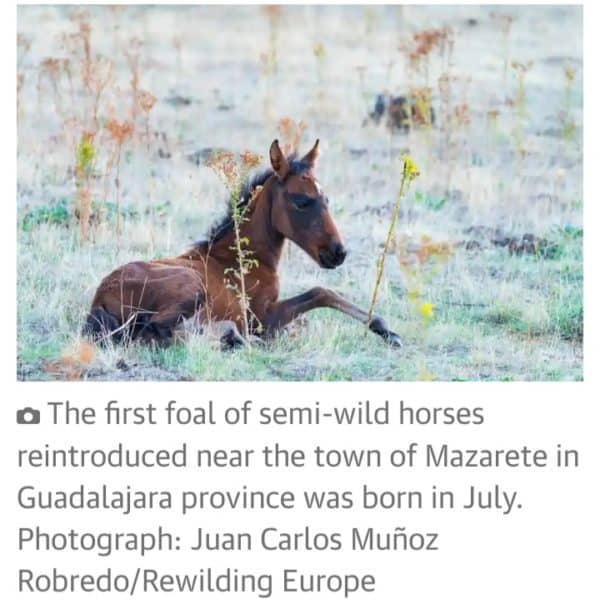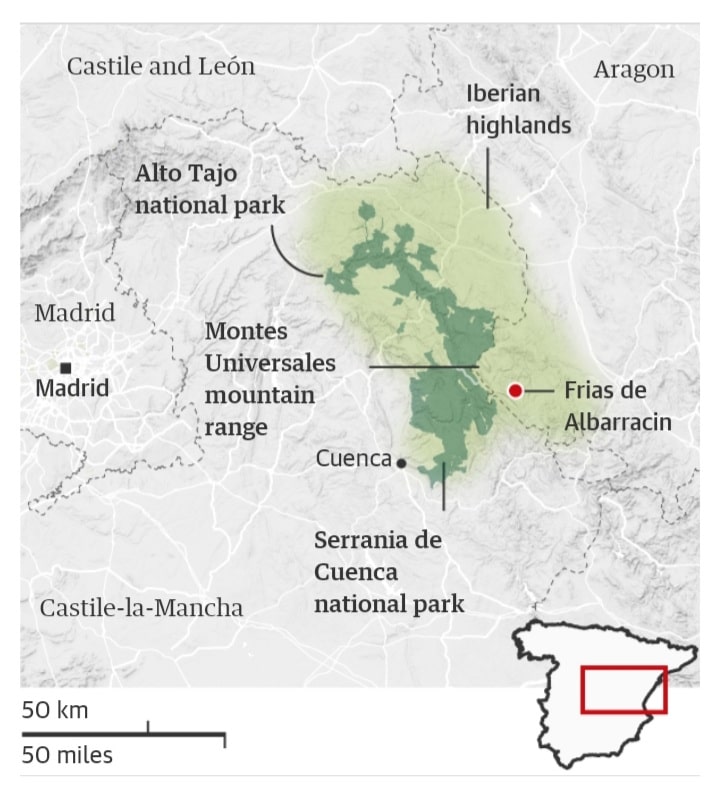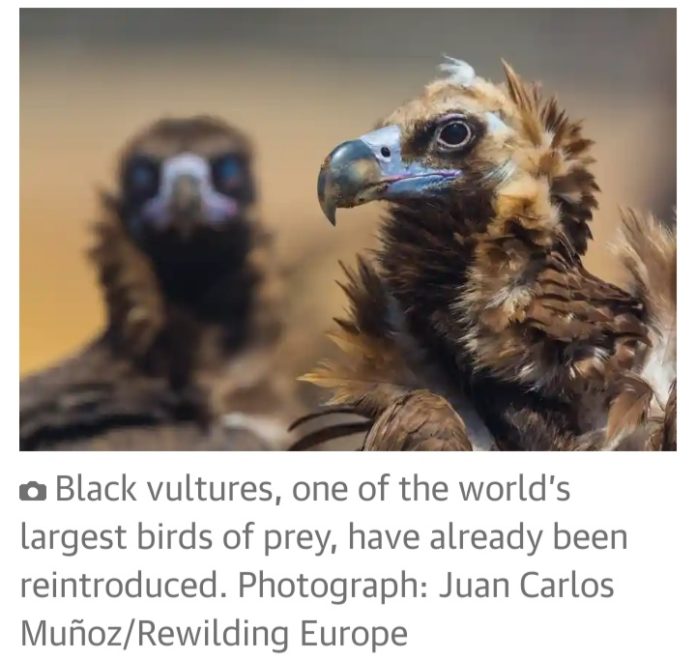- Quote: ‘The Iberian Highlands Rewilding Landscape project, two hours drive from Madrid and 2 1/2 hours from Valencia – the first in Spain’
Black vultures, lynx and wild horses are among animals reintroduced to eastern Spain with the launch of a rewilding project spanning 850,000 hectares in the Iberian highlands east of Madrid.
Rewilding Europe’s 20-year landscape recovery scheme, aims to make the land wilder and more nature-friendly.
The protected area is the southern part of the Iberian Chain, a mountain range that stretches 500km from the north-west of the country to the Mediterranean in the south-east.
A landscape of canyons and valleys, it is dominated by pine, oak and juniper forests, along with steppe and agricultural areas.
Following decades of land being abandoned it is among the least populated areas in Europe; with populations in many places more than halving since the fifties.
The abandonment has lead to species including deer, ibex and wild boar returning.
“There are less than around two people per square kilometre, which makes it very special because you can see nature in a different way,” said Pablo Schapira, team leader at Rewilding Spain.
“It’s very rare to find these kinds of places in Europe,” he said.
The Iberian Highlands Rewilding Landscape project, two hours drive from Madrid and two and a half hours from Valencia, is the tenth to be undertaken by Rewilding Europe – the first in Spain. “These cities have a lot of people who are looking for special places to see nature, so the tourist potential of this area is huge,” said Schapira.
A herd of tauros, cattle back-bred to fulfil the ecological role of aurochs, an ancient and now extinct wild bovine species have been released near Frias de Albarracín.
Eleven semi-wild horses were released during the summer near Mazarete, with the first foal born in July. More releases are scheduled this year.

Up to 15 black vultures will be introduced annually, amid the first batch released in Alto Tajo in September.
Black vultures, also known as cinereous or monk vultures – one of the largest birds of prey in the world – have a wingspan of more than three metres.
All birds are tagged with GPS transmitters, so scientists can track their movements.
Bearded vultures are being encouraged to naturally re-colonise by improving habitats for them. Vultures of this species are called quebrantahuesos, bone-breakers, due to dropping bones from great heights to break into the marrow inside. Red kites could also be released. Already the area is home to a number of raptors, including golden eagles, Egyptian vultures, griffon vultures and eagle owls.
Iberian lynx will be released soon, with three or four animals let out initially.
Two decades ago they were the world’s most endangered cats, with under 100 left, but there are now more than 1,000 across Spain and Portugal after a number of successful EU projects.

There are no plans to reintroduce wolves – with locals voicing fears they will kill livestock.
Included in the Iberian highlands project are three core areas, the Serranía de Cuenca, Alto Tajo and Montes Universales.
More than half of the landscape is already protected, mainly as sites in the EU’s Natura 2000 network, meaning that it has been designated as among the most valuable for wildlife.
The project has secured three years of funding, with a budget of between €800,000 (£690,000) and €900,000 a year. Organisers hope to secure more in the future. Conservationists have been working with local organisations, including Terra Naturalis, Asociación Nacional Micorriza, and FIRE, the International Foundation for the Restoration of Ecosystems, since September 2019 to prepare for the launch.
David Thomas, director of the Endangered Landscapes Programme, which has contributed £1.3m, said: “By initiating a bottom-up process for the conservation and restoration of this landscape’s ecosystems, we believe the project has potential to benefit both nature and people.”





